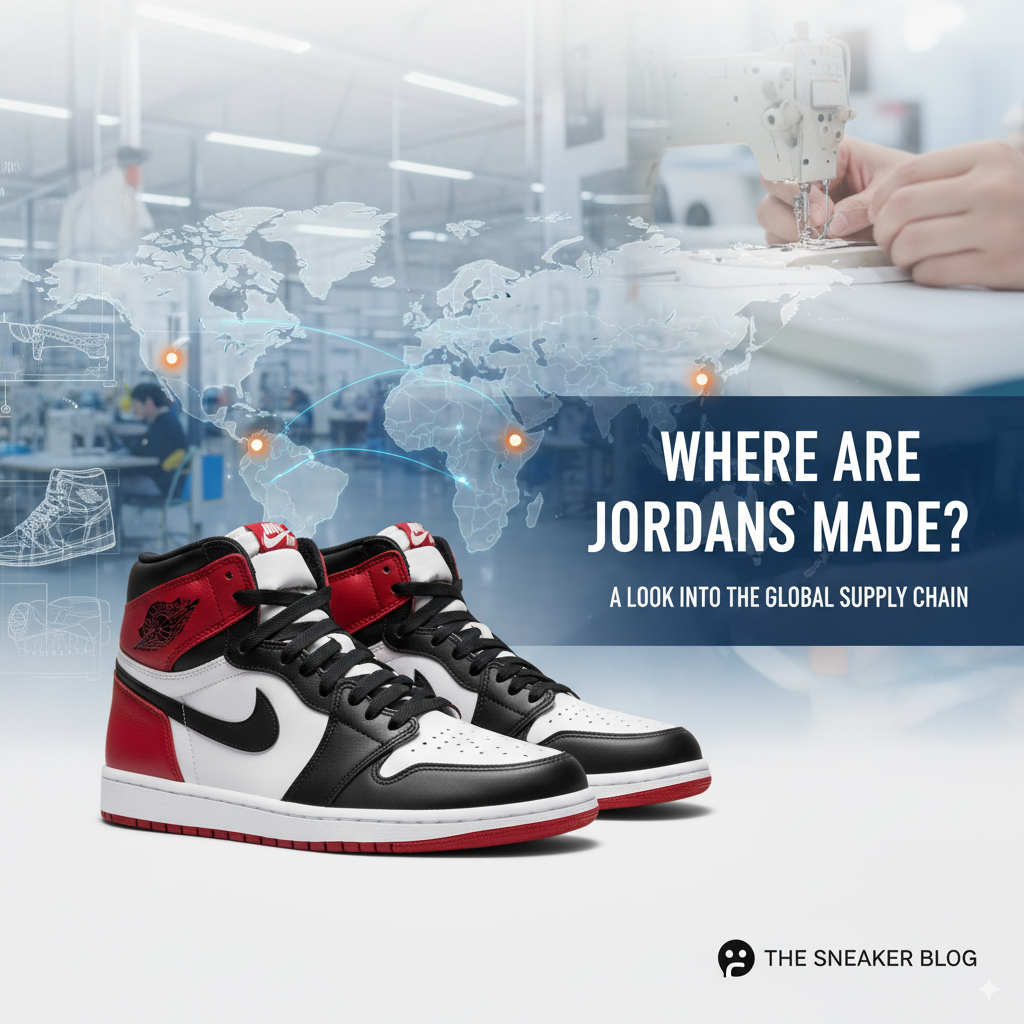Where Are Jordans Made? A Complete Guide to Air Jordan Manufacturing and Authenticity

If you’ve ever asked “where are Jordans made?” you’re not alone. Sneaker fans and collectors are often curious about the production origins of Air Jordans, both for authenticity verification and for understanding the craftsmanship behind these iconic shoes. In this guide, we’ll explore where Jordans are manufactured, which countries produce the genuine models, and how to distinguish real pairs from replicas.
The Origins of Air Jordan Manufacturing
Air Jordans are part of Nike’s Jordan Brand line, originally launched in 1985. Despite being a globally recognized American brand, the manufacturing of Jordans does not take place in the United States. Like most athletic shoes, Air Jordans are produced in factories overseas to meet global demand and maintain competitive pricing.
Primary Manufacturing Countries
The majority of Air Jordans are made in countries known for large-scale sneaker production:
- China: Many recent Air Jordan models, especially lifestyle releases and retro editions, are manufactured in China. The factories are highly automated, producing consistent quality for global distribution.
- Vietnam: Vietnam has become a key production hub for Nike, including Jordan sneakers. Many mid- and high-tier models come from Vietnamese factories.
- Indonesia: Some Air Jordans are manufactured here as well, often for general release colorways.
- Other Locations: In rare cases, limited releases or special collaborations might be produced in different countries, but China, Vietnam, and Indonesia dominate the supply chain.
Despite being made abroad, every pair of Air Jordans undergoes strict quality control to meet Nike’s global standards.
Real vs. Fake: How Manufacturing Relates to Authenticity
When people ask “where are real Air Jordans made,” it’s often because fakes have flooded the market. Knowing the production origins can help you spot counterfeit sneakers.
- Check Country Labels: Authentic Jordans include a production tag inside the shoe with “Made in China,” “Made in Vietnam,” or “Made in Indonesia.”
- Verify Details: Quality stitching, materials, and packaging match Nike’s standards. Counterfeit sneakers often have uneven stitching, off-center logos, or incorrect fonts on tags.
- Trusted Sources: Purchasing from verified retailers or platforms ensures you get authentic products.
For sneaker collectors, this is similar to opening a Mystery Box: the excitement of unboxing is only enjoyable when you trust the authenticity of what’s inside. Platforms like HapaBox provide verified, authentic sneaker collections for enthusiasts. New users can also check the HapaBox Beginner’s Guide to learn how to safely start their sneaker journey.
Tips for Ensuring You Buy Real Jordans
- Stick to Official Retailers: Nike, Foot Locker, and Finish Line guarantee authenticity.
- Use Trusted Marketplaces: Platforms like StockX authenticate every pair before shipping, making it safe to purchase rare releases.
- Avoid Deals That Are Too Good: Unrealistic discounts often indicate counterfeit products.
Final Thoughts
Understanding where Jordans are made helps fans appreciate the global manufacturing process and ensures collectors know how to identify authentic sneakers. Air Jordans, though produced overseas, maintain the high-quality standards that have made them a cultural icon.
For those looking to expand their collection while guaranteeing authenticity, exploring verified platforms like HapaBox offers both excitement and confidence in every purchase.
